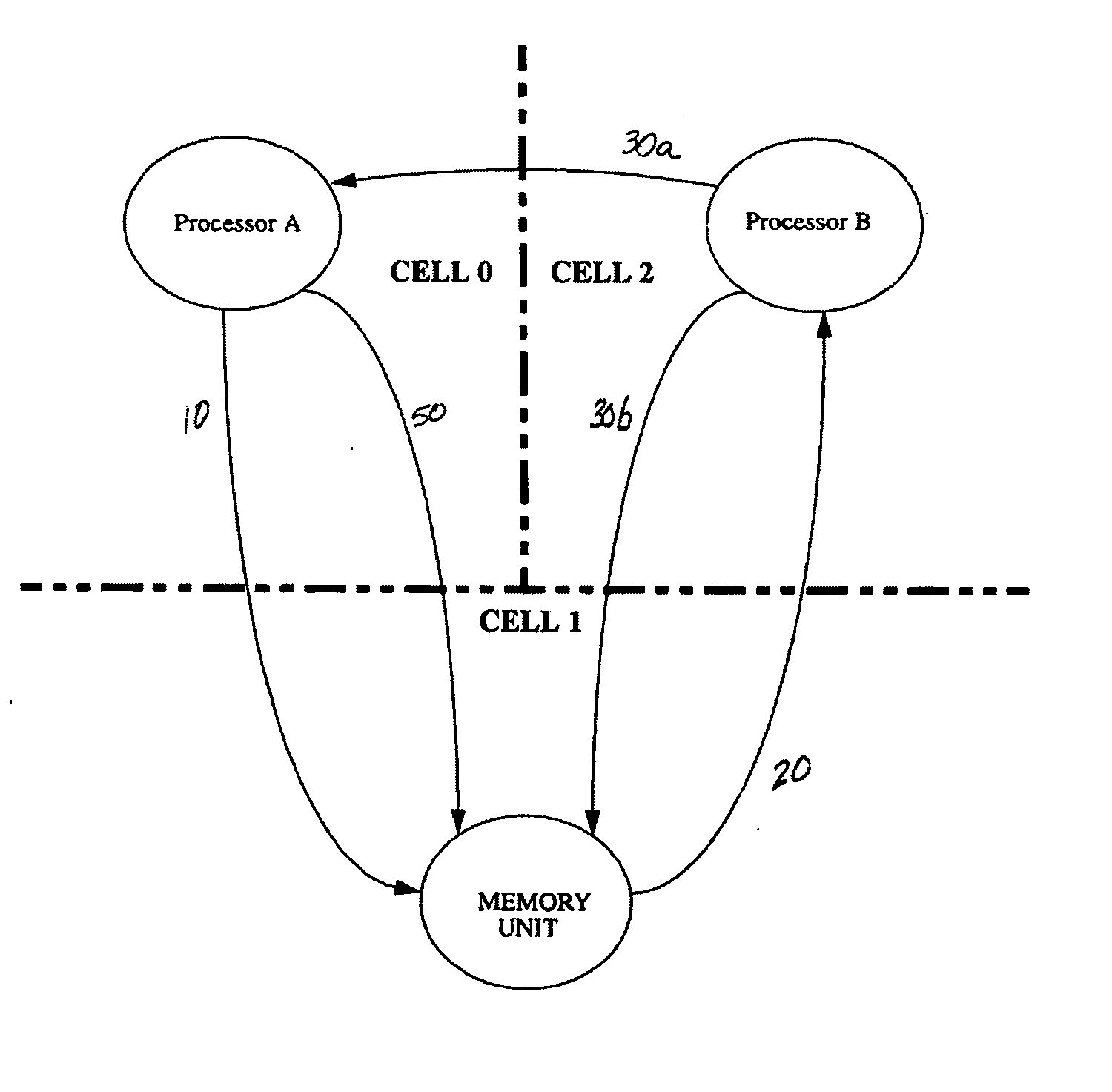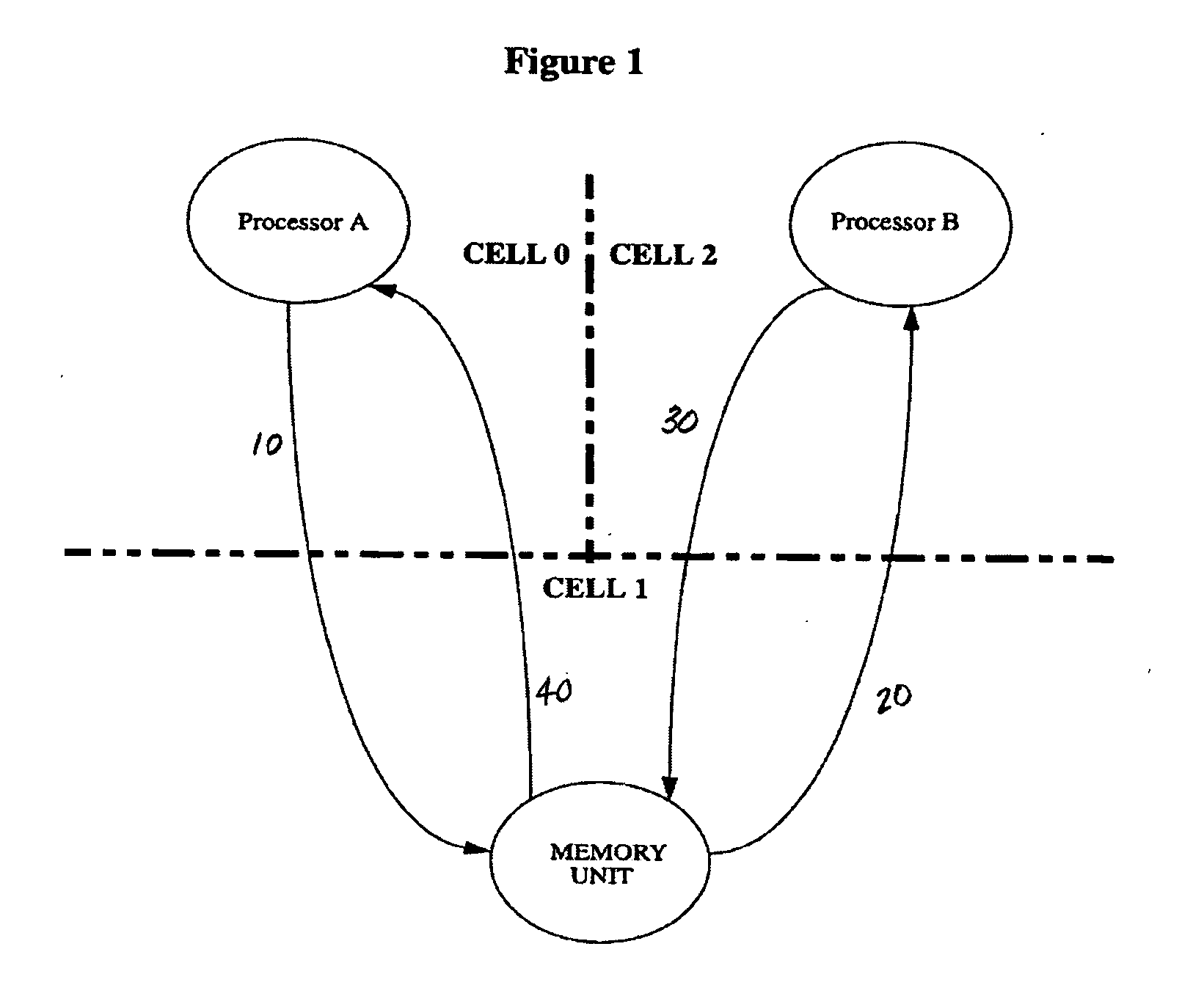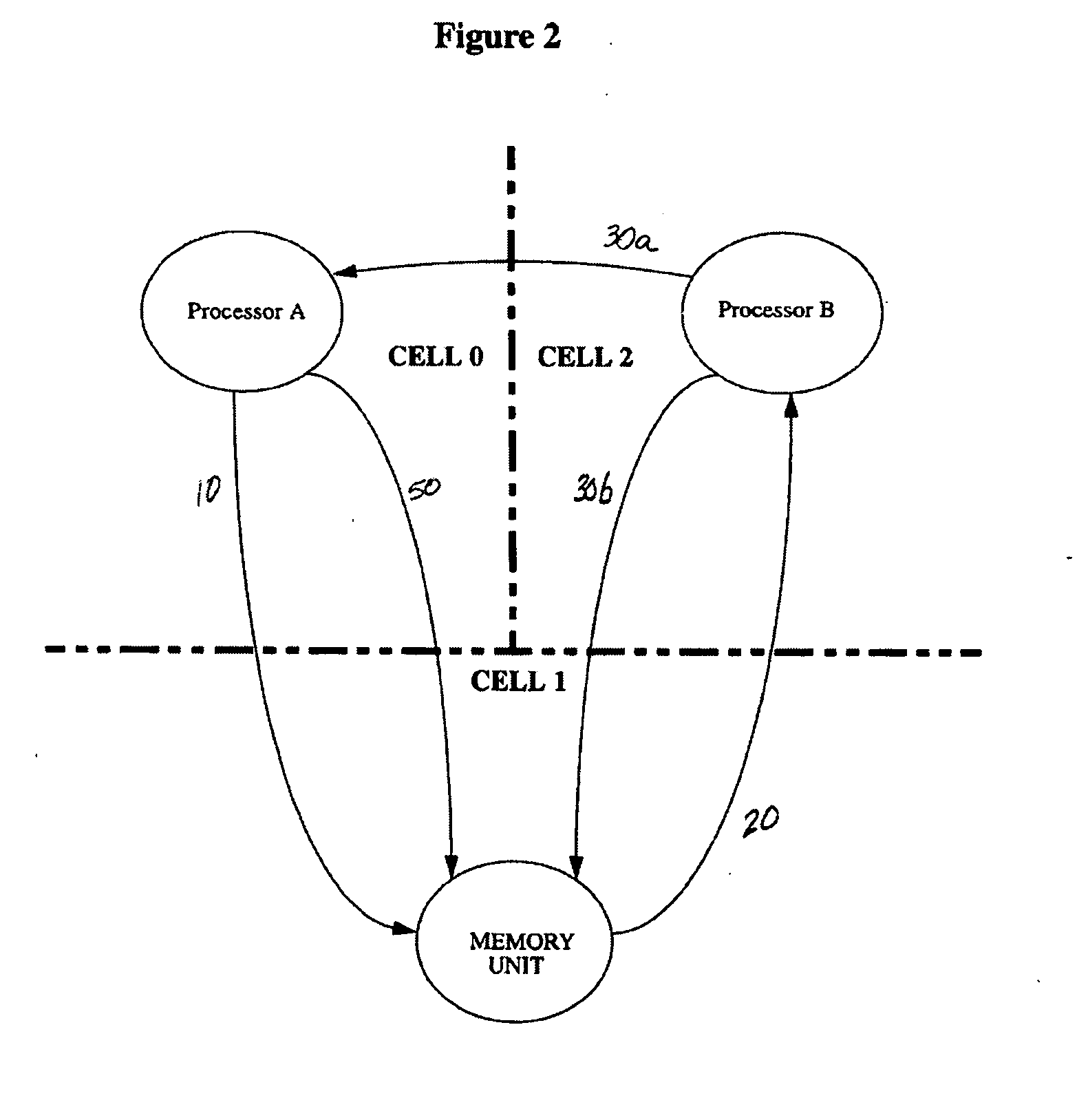Cache line ownership transfer in multi-processor computer systems
a computer system and multi-processor technology, applied in the field of cache line ownership transfer in multi-processor computer systems, can solve the problems of increasing the cache miss latency of each step, and the cache miss latency can be extremely large, so as to reduce the number of steps, reduce the cache miss latency, and reduce the effect of latency
- Summary
- Abstract
- Description
- Claims
- Application Information
AI Technical Summary
Benefits of technology
Problems solved by technology
Method used
Image
Examples
Embodiment Construction
[0009]FIG. 1 illustrates in greatly simplified form a shared memory multiprocessor computer system that uses a directory-based cache coherency scheme. The simplified system is divided into three cells, arbitrarily designated Cell 0, Cell 1, and Cell 2. A first processor, arbitrarily designated Processor A, is associated with Cell 0. Another processor, arbitrarily designated Processor B, is associated with Cell 2. Both Processor A and Processor B have their own cache memory. A memory unit is associated with Cell 1 and is shared by both Processor A and Processor B.
[0010] If Processor A requires ownership of a cache line owned by the memory unit, a request transaction, which contains the memory address for the requested cache line stored in the memory unit, is sent from Processor A to the memory unit that owns the cache line, as represented by arrow 10. The memory unit receives the request transaction and determines from the DRAM tag for the memory address of the requested cache line ...
PUM
 Login to View More
Login to View More Abstract
Description
Claims
Application Information
 Login to View More
Login to View More - R&D
- Intellectual Property
- Life Sciences
- Materials
- Tech Scout
- Unparalleled Data Quality
- Higher Quality Content
- 60% Fewer Hallucinations
Browse by: Latest US Patents, China's latest patents, Technical Efficacy Thesaurus, Application Domain, Technology Topic, Popular Technical Reports.
© 2025 PatSnap. All rights reserved.Legal|Privacy policy|Modern Slavery Act Transparency Statement|Sitemap|About US| Contact US: help@patsnap.com



